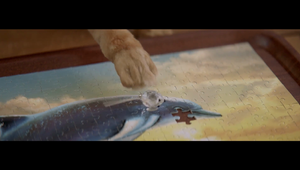
Toby Talbot and Ogilvy Want Marketers To Measure ROC - Return on Creativity - Instead of ROI

Instead of viewing creativity and effectiveness as separate mountains to climb, agencies and marketers must start from the position that “creativity is effectiveness”, Ogilvy has argued, which means redefining return on investment (ROI).
The WPP agency’s Australia and New Zealand chief creative officer, Toby Talbot, said, “ROI needs to evolve. When you think about what ROI delivers, generally speaking, it is classic short termism.” He wants agencies and clients to measure ROC - return on creativity - instead.
Ogilvy measures ROC through its impact scale, a global tool that measures an idea on a scale of 1 to 8.
A 1 is a ‘negative’ idea that worsens your opinion of the brand, 2 is invisible, 3 miniscule, and 4 good. An idea should be a 5 (inspiring) or above - 6 is described as contagious and 7 transformative. An 8 is rare: a legendary idea that creates a brand’s legacy and changes culture.

Toby rated Vaseline’s Transition Body Lotion as a 7 - a transformative piece of work that creates sustainable positive change. Ogilvy Singapore and Vaseline worked with Thailand’s transgender community for two years to research and create the world’s first clinically proven skincare for transgender women (the transitioning process can dry out skin). The campaign earned 158 million impressions, 100% positive sentiment, and a Glass Grand Prix at Cannes this year.
“We can go further now. We can actually get very involved in products,” Toby said, speaking at SXSW Sydney.
“There's a lot of doom and gloom out there in the world, but actually, from the point of view of being a creative now, you can help design products, you can change policy by introducing new things. It's way beyond the scope of a normal brief.”
On creative risk taking, senior global brand director at Vaseline, Louis Piereck, said the brand performed a risk assessment on the idea, and “the biggest risk, we realised, was that the product did not deliver. We were onto something so important that if the product didn't deliver, that was the biggest risk.”
In a market facing shrinking budgets, tough economic conditions, and short termism, Toby proposed that talking about creative bravery isn’t helpful.
“Most marketers are paid not to take risks. Most marketers are there to shift products. Most marketers are there with very clear KPIs that they have to stick to, and the more agencies go on and on about being brave, in a way, it's the wrong discussion to have.”
Louis, who is based in Singapore and has been a marketer at Unilever for more than 20 years, added, “There is an incentive to be average if you want to have an average result. And you can always hide behind mediocrity and blame [it] on someone else.
“But I think if you are a little bit more ambitious, you cannot just hide behind Excel sheets and KPIs and say, let's not take a risk. Let's do something simple.”
Toby noted that he can gauge risk appetite based on how the brief is categorised. “We have this expression called a task brief. For me, that's just flagging the fact that there's nothing interesting coming your way, and generally speaking, a brief that has no real insight.”
“On top of that, I have a bit of an aversion to the expression business as usual,” he continued.
“Whenever you go through your agency WIPs, there's always somebody who's going to say, 'Oh, there's a whole bunch of BAU coming through at the moment'. And for me, business is never usual. There are always opportunities that you can find.”
He uses the example of KFC Fly. The idea started as a task brief - the fast food brand wanted more people using the app. The agency hid international menu items in the Australian app at the start of the year, but there was a catch - they were pick-up only.
So KFC flew the first person to find the Japanese Wafu Cutler burger in the app to Tokyo. It took a few days for the first secret burger to be spotted; from there, the idea blew up.
“We had film crews on standby. We knew that we'd be going to Tokyo the first week, and the next week, there was a crew on standby to go to Cape Town, and then Barcelona, and then Vancouver.
“It was quite an ambitious idea, when you think about it, because when we pitched it to them, it was a case of saying, 'Look, actually, we're going to turn your app into a travel app.’”
It worked. KFC Fly drove $40 million in app sales, a 43% uplift.
“It wasn't necessarily the cheapest promotion, but it was a very, very financially lucrative idea,” Toby said.
“Most importantly, you are letting the brand grow in culture in interesting new ways. I don't think people would necessarily associate KFC with travel, but now they do.”















